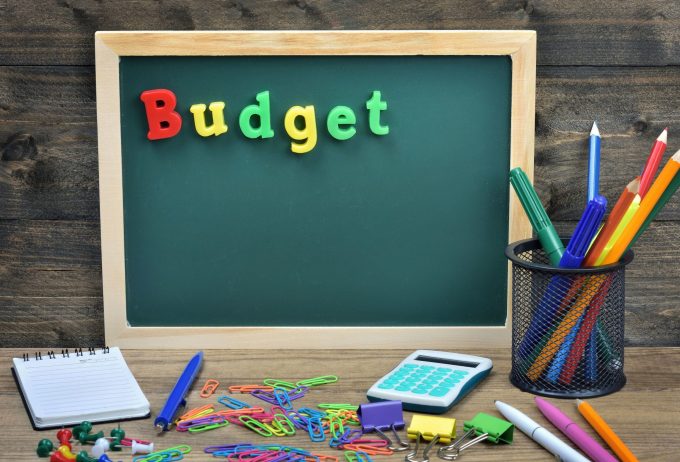What is DLD – the most common disorder you have ‘never heard of’?
Developmental language disorder or DLD is a lifelong disorder that affects language comprehension and expression.

People with DLD find it more difficult to say what they mean and to understand others.
About two students in every classroom of 30 will have DLD, so it is about as common as attention-deficit hyperactivity disorder (ADHD) and much more common than autism.
In fact, DLD has been described as the most common disorder that most people “have never heard of”.
We are researchers in inclusive education, who specialise in how schools can best support students who experience language difficulties. We work with a lot of these students and know how easily these difficulties are either missed or misinterpreted.
How does this happen?
In a new study, our team at QUT’s Centre for Inclusive Education surveyed more than 260 Australian teachers in both primary and secondary schools.
We asked them to rate how good they were at identifying students with DLD, from 1 = “poor” to 5 =“excellent”. The average response was 2.77 (or just below “reasonable”).
Participants were then provided with a list of ten characteristics and asked to identify those reflecting difficulties with speech (how we say sounds and words), those reflecting difficulties with language (how we share ideas), and those reflecting difficulties with both. It is important teachers can distinguish between the two to provide the right support.
Their overall accuracy was 48%, suggesting teachers need to know more about DLD than they think they do. Worryingly, discrepancies between teachers’ perceived and actual knowledge could work to prevent them from seeking the professional learning they need.
Under the radar
DLD flies under the radar because its characteristics are subtle and easily misinterpreted. But the implications are serious if teachers don’t know about DLD or how to support these students.
Students with DLD struggle academically and socially because language is how friendships are made and the school curriculum is taught. Students with DLD often perform well below their classmates.

Without support, students with DLD can begin to feel ashamed, frustrated, and misunderstood, which can lead to behavioural problems, suspension, leaving school early and unemployment.
What should parents and teachers look for?
DLD has been described as “hiding in plain sight” because it is mistaken for other things, such as poor behaviour or lack of interest in school.
But there are some indicators which should prompt further investigation by a qualified speech pathologist. These include:
-
difficulties learning to read, followed by avoidance of reading
-
difficulties with writing, often characterised by mistakes when it comes to sequencing in a story (explaining what happened and when)
-
difficulty following instructions or directions. Problems in this area are particularly noticeable when the child is provided with multiple instructions but misses key steps or becomes muddled without seeking help from peers
-
appearing chatty, but having a relatively limited vocabulary for their age. A child may use a lot of “filler” words like, “things” or “stuff” in place of words that they either don’t know or can’t recall
-
using substitutes that sound similar but do not have the same meaning. For example, “sufficient” instead of “efficient”, or “pacific” rather than “specific”
-
using made up words or incorrect word combinations, such as “tooken” or “racehorsing”, beyond the early years of school when errors like this are not uncommon.
These indicators are often not noticed by teachers and parents/carers who act as interpreters and guess what the child really means without even being aware that they are doing it.
Although well-intentioned, this can mean that the child’s difficulties with language remain undetected.
What helps students with DLD?
Because DLD is not as well-known as ADHD or autism, some misperceptions exist. One is it can be “cured” through speech-language therapy. As many as four in five (81.7%) Australian teachers in the QUT study believed this to be the case.
While speech pathology support is important, particularly in the early years, it will not address ongoing comprehension challenges faced by children with DLD, especially in the classroom.
Here, teachers can make a difference. In another study published this year, we asked 50 students in years 7 to 10 with language and behavioural difficulties, “what makes an excellent teacher?”. They said excellent teachers made themselves easy to understand by:
-
reducing the number of instructions and the “wordiness” of explanations, as well as the speed and complexity of what they say
-
building in pauses to allow students’ time to process instructions
-
providing written instructions as well as simple visual supports
-
emphasising and reiterating key points
-
introducing and explaining new or tricky words
-
making sure they have students’ full attention before teaching
-
regularly maintaining that attention through cues, gestures and routines.
These simple practices are critical for students with DLD, but they also benefit all students. This is because we all learn and process language in the same way. If teachers are very clear with students, it reduces the likelihood a student will get overwhelmed or misunderstand a lesson.
Where to go next
Parents who are worried about language development should talk to their child’s teacher, who can follow up with the school’s learning support team.
Parents and teachers can also access more information about DLD from the Raising Awareness of DLD website, listen to this federal government-supported podcast or this QUT presentation on supporting students with DLD in the classroom.
Most importantly, they need to know and remember that with the right support, students with DLD can succeed socially and academically.
Jaedene Glasby was the lead author of the first study described in this article.![]()







